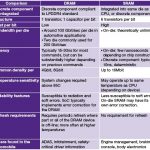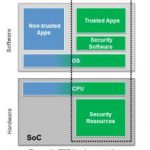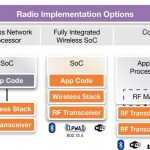You have certainly experienced that modern mobile phones are used for more than phone calls and do not have room for multiple connectors. A new approach for audio connectivity is needed, allowing product designers to retire the 3.5mm jack. Considering the USB audio protocol to replace the analog audio solutions, typically using… Read More
Driver Assistance and Autonomous? Need ASIL D Ready Certified CPU!
The automotive segment is moving from a kind of niche, filled with commodities and highly specialized low complexity IC, to an innovative and very dynamic segment attracting most of the big players, from Qualcomm to Nvidia or Intel. These chip makers are targeting automotive as they need to find new growth areas, and they have quickly… Read More
Moving from SRAM to DDR DRAM in Safety Critical Automotive Systems
Until now, most of the processors contained within automobiles could be served by SRAM, at the exception of infotainment systems relying on a more powerful CPU connected to DRAM, but these systems are non-safety-critical. Advanced Driver Awareness Systems (ADAS) and self-driving vehicle systems demand powerful processors… Read More
How to Secure a SoC while Keeping Area and Power Competitive?
I have attended LETI conference last June and remember the paper presented by Alain Merle, their security guru. Alain said that smart cards are secured because up to 50% of the Silicon area is dedicated to security. When you design a SoC to address applications like smart metering, NFC payment or embedded SIM, you know in advance … Read More
Why Integrate Bluetooth LE IP in a Single Wearable SoC?
Did you know that, in over 800 teardowns of mobile and wearable products from 2012 to 2015, wireless chips outnumbered the actual number of products, indicating multiple wireless ICs in some designs ([SUP]1[/SUP])? It could be interesting to look at the advantages of integrating wireless technology such as Bluetooth low energy… Read More
Next Book Signing: Linley Processor Conference 2016!
It is a busy month for book signings but it is a pleasure to do it for the greater good of the semiconductor industry. It really is an honor to meet the people who keep our electronic devices on the leading edge of technology, absolutely.
The Linley Processor Conference is on September 27[SUP]th[/SUP]and 28[SUP]th[/SUP] at the Hyatt… Read More
More on HAPS hybrid prototyping for ARMv8 with Linaro
A few weeks ago we previewed a Synopsys webinar describing how they are linking the ARM Juno Development Platform with the HAPS-80 and HAPS ProtoCompiler environment. I’ve had a look at the archived event and have some additional thoughts.… Read More
Foundation IP for Automotive: so Stringent Quality Requirements!
The Automotive IC market is not the largest segment, but is certainly the segments expected to grow with the highest CAGR, with 10.8% from 2013 to 2018, according with IC Insights (January 2015). If you consider the pretty long concept/design to production cycle time (7 years or more) as well as the numerous segments just emerging… Read More
Semi execs look at IoT tradeoffs a bit differently
What happens when you get a panel of four executives together with an industry-leading journalist to discuss tradeoffs in IoT designs? After the obligatory introductions, Ed Sperling took this group into questions on power, performance, and integration.… Read More
Radio Integration – the Benefits of Built-In
It’s always a pleasure when a vendor gives a really informative, vendor-independent presentation on what’s happening in some domain of the industry and wraps up with (by that point) a well-deserved summary of that vendor’ solutions in that space. Ron Lowman did just that at the Linley conference on Mobile and Wearables, where … Read More











